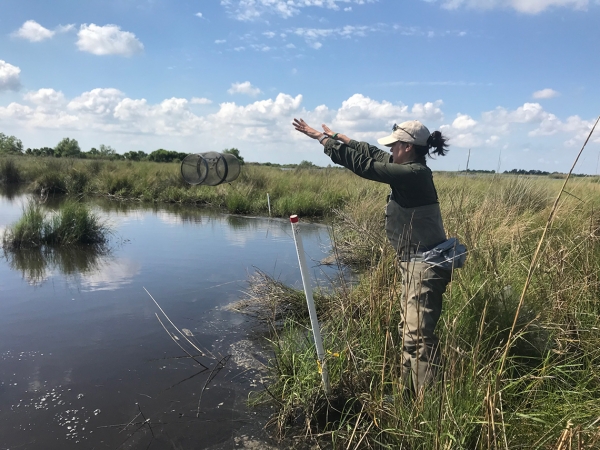Louisiana’s newly released draft of the state’s 2023 Coastal Master Plan proposes to spend $16 billion on the construction of new tidal marshes as a key strategy to combat coastal land loss. An important question is whether these newly created marshes will be similar in ecological value to the existing natural marshes. A new study published in the journal Ecosphere and funded by the NOAA RESTORE Science Program addresses this issue, and the results provide positive news for the state’s plans to rebuild the coastline.
“This work is really exciting because it shows that when they’re carefully designed, restored marshes very rapidly become indistinguishable from natural marshes, from an ecological standpoint,” said Melissa Carle, Monitoring and Adaptive Management Team Lead for Deepwater Horizon restoration with NOAA Fisheries’ Restoration Center. “The research here suggests that if you build it right, all of the organisms that make up a healthy marsh community will come.”
The multi-institutional research team was headed by Michael Polito, an associate professor at LSU’s Department of Oceanography & Coastal Sciences, or DOCS, and included fellow DOCS Professor Nancy Rabalais, Department of Environmental Sciences Professor Linda Hooper-Bui, and researchers from University of Wisconsin-Madison, Michigan Technological University, University of Florida, University of North Carolina at Charlotte, University of Tennessee at Knoxville and the Louisiana Universities Marine Consortium.
Read more at: Louisiana State University
A scientist deploying a minnow trap within a marsh pond at a natural marsh site in Lake Hermitage, Plaquemines Parish, Louisiana. (Photo Credit: Allison Benelli, © Louisiana State University)


